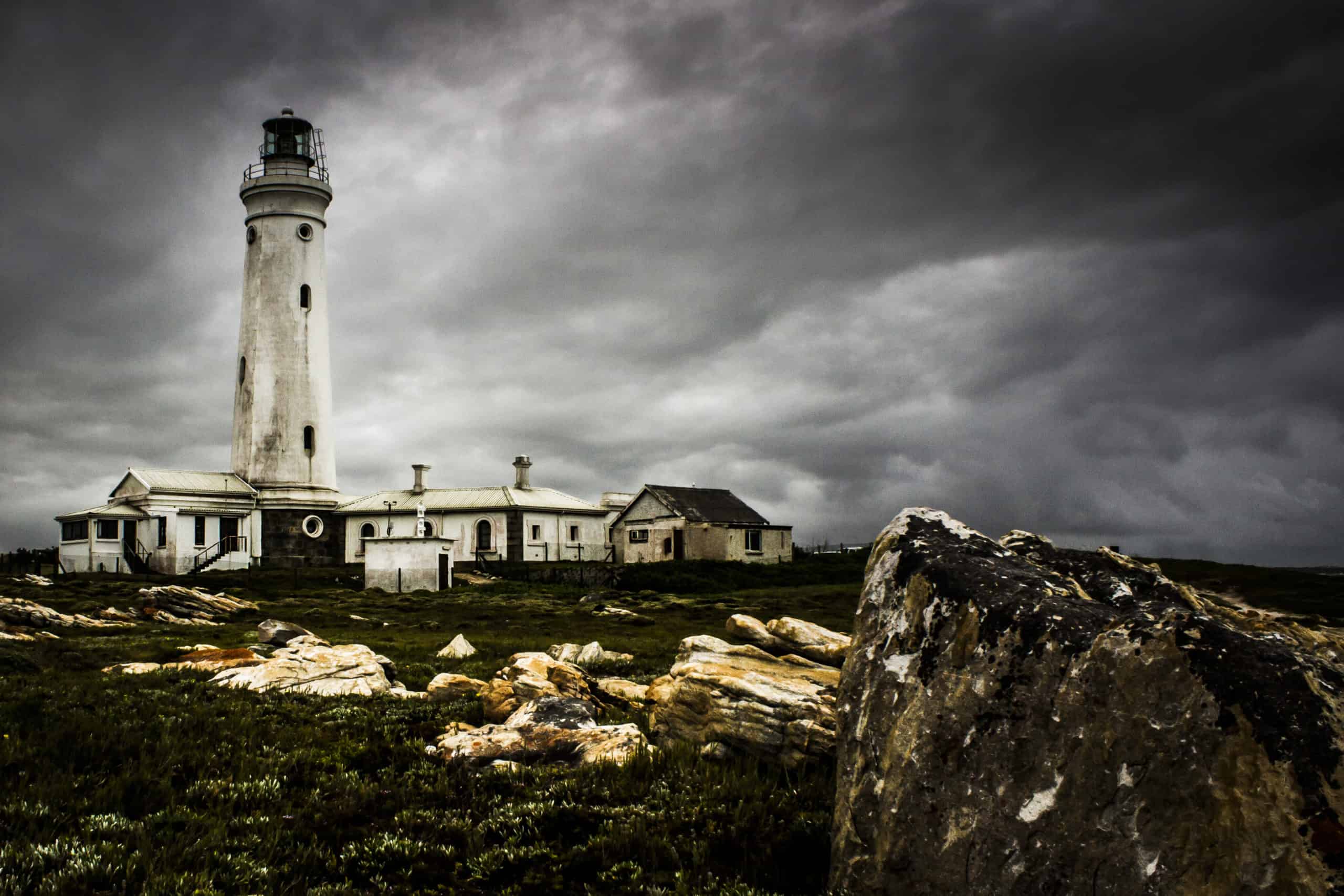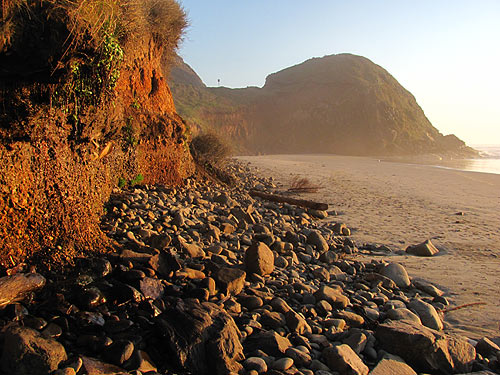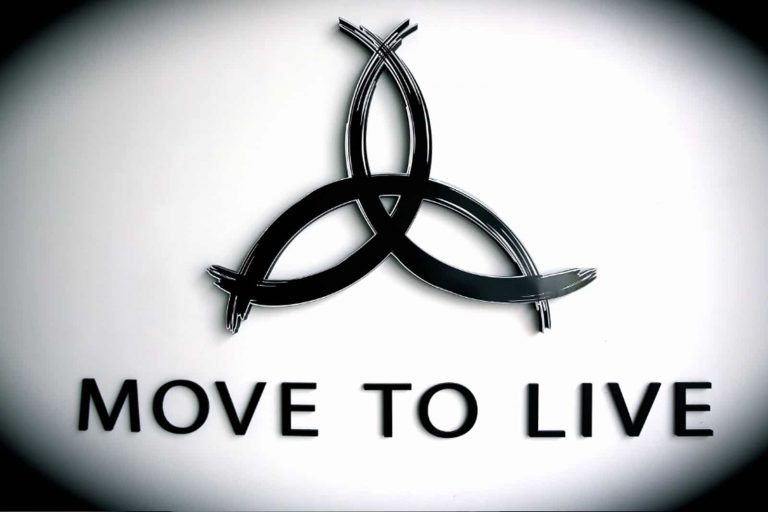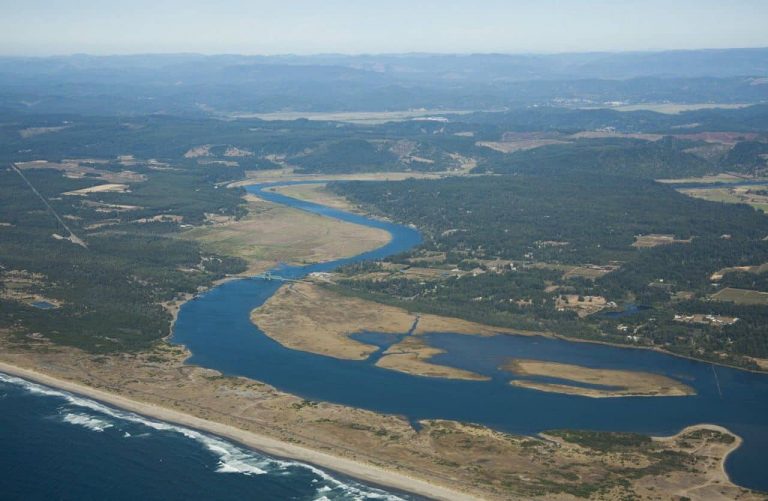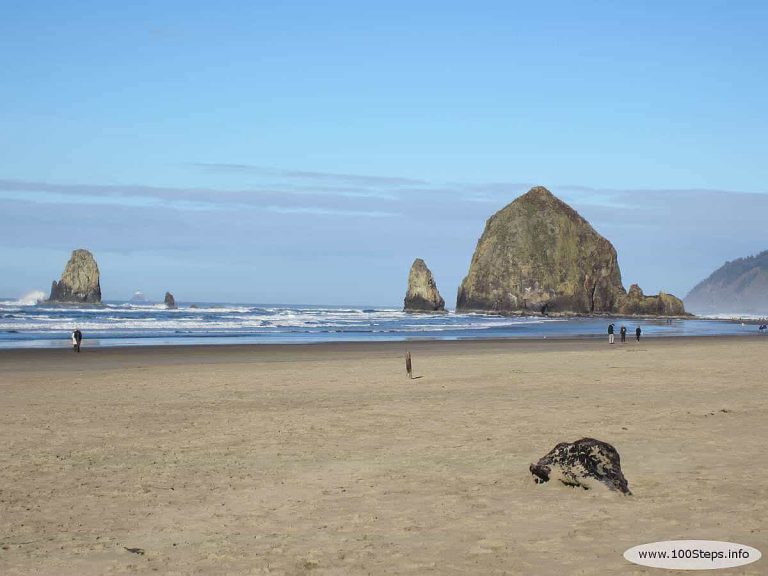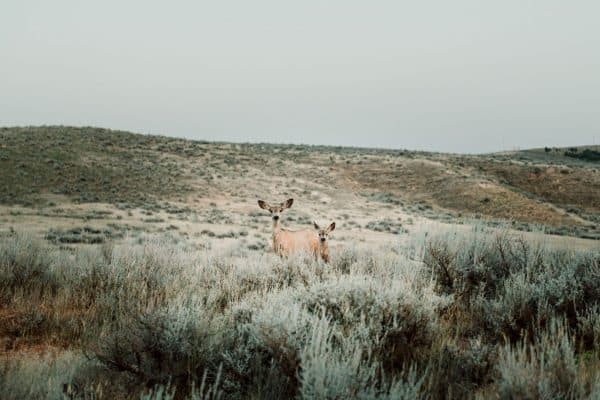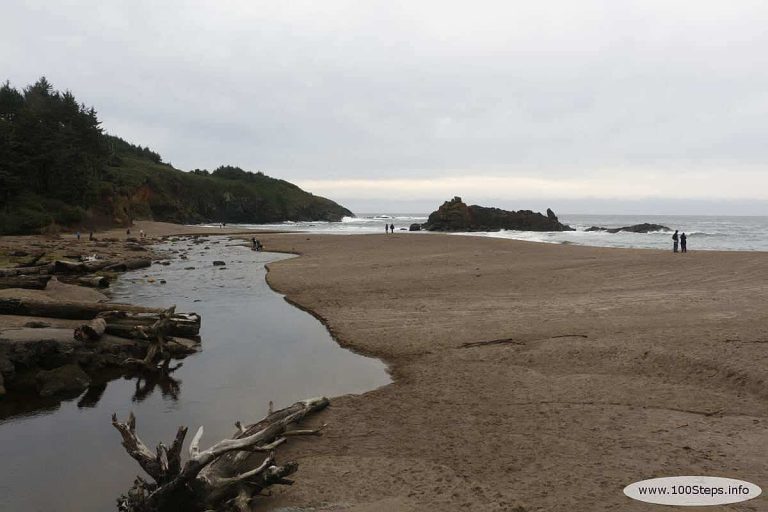Mystery Lighthouse
“It must be a lighthouse,” my husband stated. It was the last evening of our trip to Brookings. Parked at a west-facing overlook in Harris Beach State Park, we were watching the sun slide behind the single towering cloud bank organized mid-sky.
It had been a glorious rain-free day, following two days of early Spring drenching. Scott had spotted the sea-encircled structure earlier while scanning the horizon with binoculars – again from our vehicle – this time while having lunch and watching surf, surfers, and beachgoers at the Chetco River South Jetty. Glimpses varied as lighting changed when the sun dodged in and out of clouds. Ship? Its position remained fixed. Buoy? It seemed much too large. Once identified with magnification, we found the mass just barely visible to the naked eye. Our best guess was Battery Point Lighthouse in Crescent City, CA, but the angle seemed wrong. We deemed this confirmed as we read in our William Sullivan Oregon Coast book that Battery Point Lighthouse could be reached on foot at low tide. This cylinder was too far off shore. Yet, from our perch on the cliff we could visually follow the land until it ended, pass an area of empty ocean, and reach what at this point was plainly a lighthouse. We were puzzled.
Since we were camping we had no Internet access, and neither of us have succumbed to the allure or expense of a smart phone. Cut off from the web-based encyclopedia of information we’ve come to rely on, we had to go “old school”. “Who can we call?” Scott asked, and then quickly answered his own question: “Ray!” When he looked at me I immediately nodded agreement.
He dialed his mobile (OK, not so old school – maybe “mid” school). First greeted by an answering machine, we were pleased when a friendly voice came on the line. Ray Pedrick and his wife Deb were watching the same sunset from the comfort of their home, the sun a bit lower in the sky due to their latitude 150 miles farther north. Scott asked if Battery Point Lighthouse was visible from Brookings. Ray explained with the patience and clarity of a professor that the geography between the two coastal cities prevented such a sighting. “Then what am I seeing in the ocean to the southwest?”
Now Ray is not just any person to call regarding lighthouses. He is caretaker of a private Oregon lighthouse near Yachats, a piece of Oregon history built by his late father-in-law, Jim Gibbs. Mr. Gibbs was deployed by the Coast Guard as a lighthouse keeper in his early years, and later wrote more than a dozen books on Pacific lighthouses and shipwrecks. His dedication to preserving this rich and fading coastal history included building more than one private lighthouse (including his own), and rescuing lighthouse artifacts for museums and his own collection. So Ray – spending many years with this man – is a veritable beacon of lighthouse knowledge.
I could hear Ray’s response projected from the phone earpiece. With no hesitation, he said “You’re looking at St. George Reef Lighthouse.”
He conveyed some lamentable aspects of its past: ships wrecking on the reef before the lighthouse was built, a wave overtaking the 150-foot tower, tragic lighthouse keeper deaths resulting from a sneaker wave, accidental lantern room damage while in transport via helicopter some years after the lighthouse had been decommissioned.
He could have continued, and we would have gladly listened, but he needed to return to his sunset and us to ours. Mystery solved, we said our thanks to Ray, and resumed our enjoyment of the blue gray and soft yellow beams as the sun lowered to the sea.

